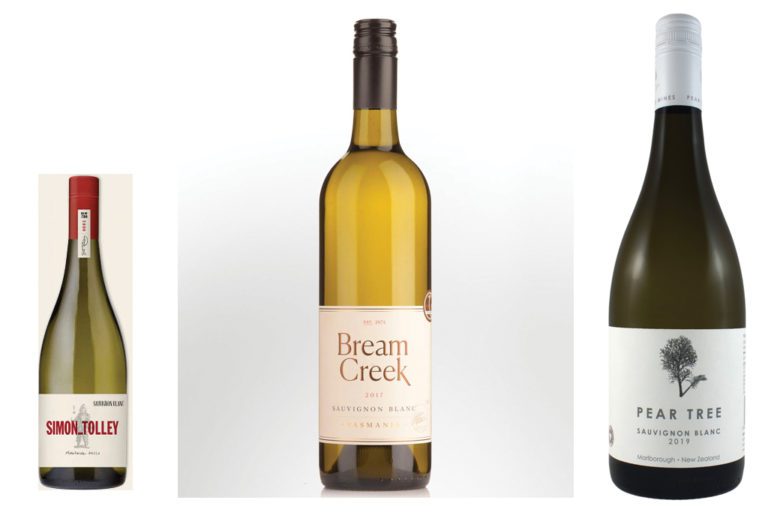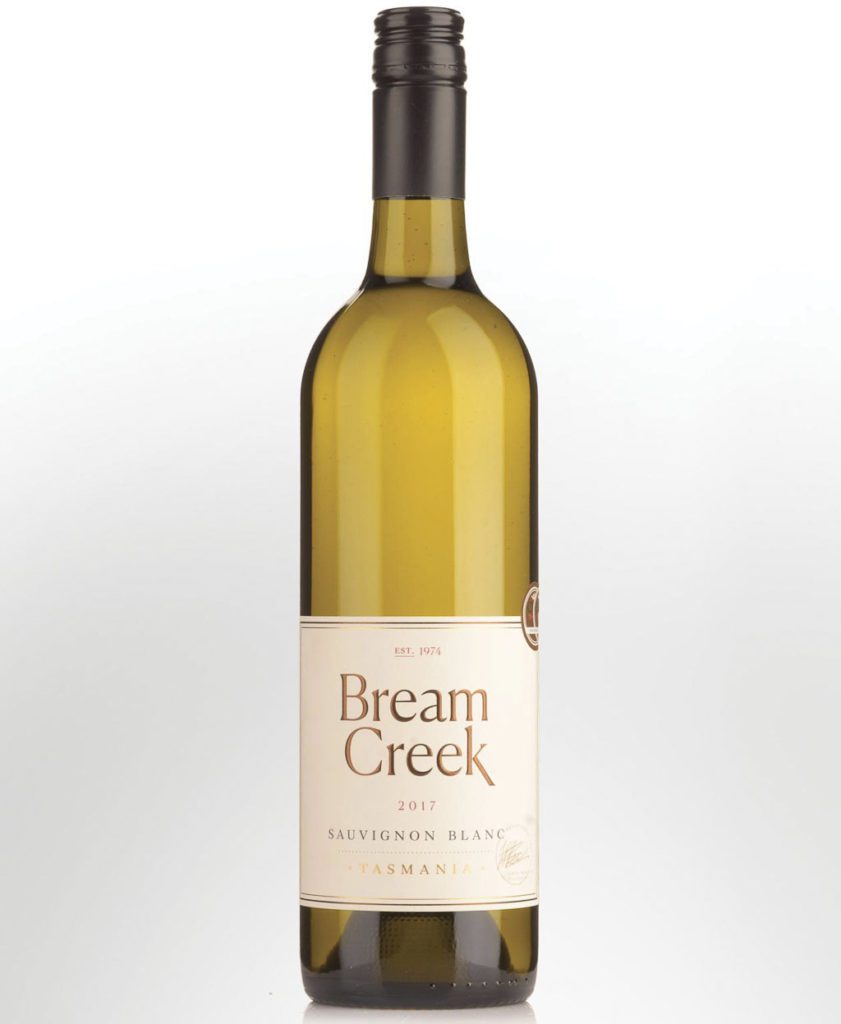WINE
Sauvignon Blanc anyone?

WORDS: Peter Panousis PHOTOGRAPHY Supplied
Well it’s finally summer and what a year it’s been. Normally, my seasonal go-to wine of choice at this time of year is a good Rizza (Riesling) or a delicate Rose̒ but things haven’t been normal lately, so it’s time to revisit the much-maligned Sauvignon Blanc …
Mention Sauvignon Blanc to many, especially those in the salubrious wine world, and there is ambivalence. Love it or hate it, the variety is here to stay and is still popular among the wine drinking community despite a so-called loathing of the variety. Despite its ‘weed status’, suspiciously, the variety trades well in retail stores – although many will deny it.
The variety is still a vigorous seller in restaurants and cafés. Adding weight to the narrative is that many if not all wine distributors’ portfolios usually carry an index of Sauvignon Blancs, thus highlighting the true extent of its appeal and potential selling power in the market. Regardless of its popularity, I always giggle when I hear a burly bloke order Sauvignon Blanc at a restaurant or bar. For me, it confirms the variety is much loved and admired in spite of the opinion of many wine aficionados. And on that note, if you promise not to tell, I find myself slurping one or two glasses of Savvie B from time to time on a hot weekend afternoon. There. I said it. Now please keep that hush, hush!
What is Sauvignon Blanc?
Sauvignon Blanc is classified as an early-ripening white aromatic grape variety that is green skinned, small and round in shape and hangs in small, compact clusters with French origins. Frances’ Loire Valley claims to be the birthplace of the variety, with historical writings tracing its discovery from as far back as the 1500s. Sauvignon Blanc is said to have travelled and introduced to Bordeaux around 200 years later in the 1700s. Even the name Sauvignon Blanc is derived from the French language – ‘Sauvage’ meaning wild and ‘Blanc’ meaning white. In addition, one of the parent grapes of Sauvignon Blanc is said to be Savagnin (not to be confused with Sauvignon Blanc, which has a checkered past here in Australia, but that is another story), a grape variety tracing back to circa 1000 AD.
Sauvignon Blanc is classified as one of the aromatic wine grape varieties which includes Albariño, Riesling, Gruner Veltliner, Viognier, Malvasia, Torrontés, Gewürztraminer, Pinot Gris and Muscat. They are known for displaying higher natural aromatic notes than other grape varieties. Specifically, aromatic grape varieties really jump out of the glass with aromas such as florals, herbal, rose petal, lemon, lime, citrus, pear, stone fruit, passionfruit, lychee, fresh, green cut grass and green capsicum.
Apart from regional differences, climate, soil types, elevation, rainfall, early or late harvesting and winemaker styles, generally speaking, wines made with Sauvignon Blanc tend to be made for early drinking, not aged (although I have tried some superb examples including one from Katnook). They are usually unoaked (and if not, they are sometimes called Fumé Blanc). Indeed, many are fermented and aged in stainless steel and are usually released early in the bottle to maintain freshness. This is the preferred style in the marketplace – crisp, clean and easy drinking. The other common characteristic of Sauvignon Blanc is high acidity, a wine that is usually dry. Having said that, wines from New Zealand tend to have a slightly higher residual sweetness. Sauvignon Blancs from Europe, including France (regarded as Old World Wines), tend to be minerally crisp and flinty and don’t usually have the overt, aromatic fruity notes of Sauvignon Blancs from Australia and New Zealand (New World Wines).
Sauvignon Blanc grows best in cool to warm climates or those with a maritime influence. In particular, slow ripening is ideal for both a better outcome and quality. The grape variety doesn’t grow well in high heat however as it dulls the acidity and flavour profile. Sauvignon Blanc is a good adaptor to soil types. For example, Sauvignon Blanc grown in sandy soils tends to produce wines that are quite herbous, clay soils tend to produce wines that have more fruit and body and chalky soils tend to produce wines which show more minerality and flinty aspects. As Amanda Ashley’s wine article published in 2016 notes: “while many grape species do not thrive in acidic soil, Sauvignon Blanc seems to grow best in shallow, silty soils with high acidity like the dry, stony soils of some parts of New Zealand”.
The science behind the aromas and flavours
Unlike many other aromatic white varietals, Sauvignon Blanc has punchy, in-your-face aromas. Generally speaking, the capsicum and leafy grass notes found in Sauvignon Blanc come from the higher levels of a compound called methoxypyrazines or ‘pyrazines’ – a compound also found in other Bordeaux family varietals including Cabernet Sauvignon and Cabernet Franc. While the concentration of these flavours and aromas is reduced through exposure of the fruit to heat and sun, good canopy management techniques in the vineyard can reduce these effects. The riper and more exposed the fruit, the lower the concentration of methoxypyrazines. Regardless, pyrazines add a certain charm and complexity to the wine.
On the other hand, New Zealand Sauvignon Blanc has that distinctive passion fruit aroma that much of the drinking market appears to love. The primary reason for this is that New Zealand Sauvignon Blanc has higher levels of Thiols than varieties from most other countries. Specifically, Thiols are an organic compound (also called Mercaptans) structured similarly to alcohol but that contain a sulphur atom. They can provide both positive and negative elements to a finished wine i.e. passion fruit aromas (one of the positives) or stinky sulphur aspects for the negative. Look out for both aromas in Kiwi Savvies.
What region is best?
Sauvignon Blanc can be found abundantly in many regions around the world including: Bordeaux and the Loire Valley in France; South Africa’s Stellenbosch; in Italy’s north east in Friuli-Venezia; Okanagan in Canada; Brazil; Valparaiso in Chile; Romania; Bulgaria; Napa Valley, Washington State, and Niagara Peninsula in the US; and abundantly and all over New Zealand including Marlborough, Gisborne and Hawkes Bay. Here in Australia, one can find great examples in our cool to warm regions of the Yarra Valley in Victoria, Adelaide Hills in South Australia; Margaret River in Western Australia; and of course, Tasmania. Anecdotal evidence suggests that New Zealand is still the preferred country of origin for Sauvignon Blanc (over Australia, followed by France) with the general public here in Australia.
Why Sauvignon Blanc?
Sauvignon Blanc is easily and readily available in the market including at retail and on wine lists. Sauvignon Blancs tend to be well priced, attractively packaged and styles are vast and varied, from simple and fun to complex and refined and non-oaked to oaked. They are also easy drinking, light, approachable and can be consumed with or without food. Alternatively, they can be complex if aged and oaked. Sauvignon Blanc is not always cheap and cheerful _ one of the most expensive wines in the world is made with both Semillon and Sauvignon Blanc and France’s Château d’Yquem comes to mind.
Due to high acidity and bright, fresh flavours, Sauvignon Blanc is food friendly. Wine Folly says “for lighter, minerally styles, from Loire Valley Sancerre, Sauvignon Blanc makes a nice aperitif with fresh cheeses like chèvre (goat) or with oysters, shellfish and white fish”. This style also works particularly well with Japanese food such as sushi and sashimi. Again, from Wine Folly: “More pungent, herbal expressions like those from New Zealand, pair well with classic kitchen herbs and vegetables or even Asian food especially Thai, Chinese and Vietnamese. Think grilled asparagus with parsley, sautéed green beans and mint and big salads topped in basil. For protein, fish, chicken and pork, especially with citrus sauces, work great. Riper, higher alcohol Sauvignon Blanc like those from Napa, can handle heavier sauces and grilled white meats.” The key to a good wine and food pairing is to match the wine’s weight and flavour intensity with the weight and flavour intensity of the food.
What to consider …
From Adelaide Hills, consider Simon Tolley’s Sauvignon Blanc. Adelaide Hills is a cool-climate, elevated region of around 300m – 700m. Simon is a fifth generation grape grower and is related to the famous Tolley family. He believes choosing the right clone for the right region is paramount to ultimately achieve the best expression of fruit and terroir. For example, Simon’s website says he uses the F4V6 clone which was “one of the most highly rated Sauvignon Blanc clones and was first registered in Australia in 1975”.
“The original selection was from Chateau d’Yquem in France in the 1880s via Wente Vineyards, California, in 1958,” the website says. “This clone has moderate yields, bunch size, berry size and bunch compactness. This clone produces pronounced aromatic and tropical varietal character.” Simon’s Sauvignon Blanc displays notes of gooseberry and lychees and is fresh, with lingering good acidity. Recently, the wine has won a trophy at the Royal Sydney Wine Show.
From Marlborough, consider Pear Tree Sauvignon Blanc. The wine is made by the legendary Ant Moore. Raymond Chan’s Wine Review webpage says: “Ant Moore took up the winemaking role at Isabel Estate in Marlborough, followed by the establishment of Catalina Sounds, and Crowded House.” My question is, was he the first to make Totara Sauvignon Blanc from Marlborough, too? I’m not sure but he is a highly skilled and well-regarded winemaker. Ant Moore currently makes Pear Tree Sauvignon Blanc. The wine is fabulous, showing all the hallmarks of Marlborough-ripe florals, stone fruit and lemongrass. The palate is rich and complex, with long-bracing acidity that is balanced and truly stunning. This is a bloody good Marlborough Sauvignon Blanc.
Another Australian darling is Bream Creek’s Sauvignon Blanc, from Tasmania. As Australia’s most southerly wine region, and definitely regarded as a cool climate, Tasmania is a premium location. Don’t let anyone fool you into believing this part of the wine world is inferior. The Apple Isle is the Mayfair of the Monopoly Board when it comes to wine regions – blue-chip all the way. Sauvignon Blanc is the third most-planted grape variety, behind Pinot Noir and Chardonnay, in Tasmania but trust me – Sauvignon Blancs from Tassie are awesome. Bream Creek was established in the early 1970s, making the winery one of the earliest pioneer producers. Its Sauvignon Blanc has notes of tropical fruits and citrus, while the palate is crisp, with good length and balanced acidity. The wine has won several trophies including Best Sauvignon Blanc at the Tasmanian Wine Show and was recently awarded 95 points by Huon Hooks Real Review.
Enjoy and happy but safe drinking.
About the author: Peter Panousis is a Fine Wine Consultant who has worked for leading wine companies for more than 16 years. Raised on the Gold Coast, Peter has a Degree in Hospitality Management, holds a Master’s degree and a Certificate IV in Adult Training, has operated a number of restaurants and cafes and owned two award-winning restaurants. A former Member of ASVO (The Australian Society of Viticulture and Oenology) and former Associate Fellow of AIM (Australian Institute of Management), Peter is Wine and Spirit Education Trust (WSET) trained and certified and has undertaken extensive wine education courses.
Follow Peter via @peterpanwine on Facebook, Twitter and Instagram.











